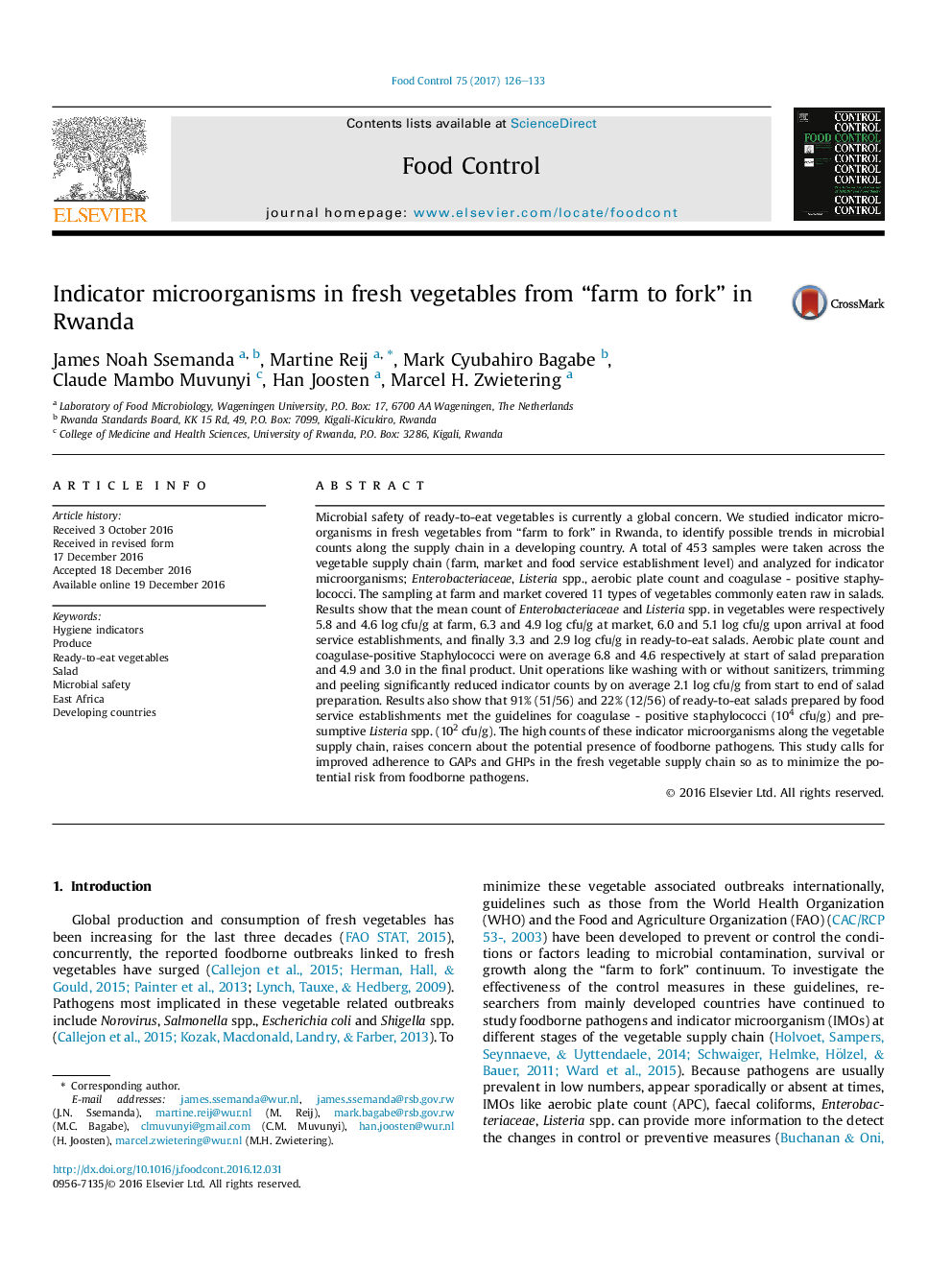| کد مقاله | کد نشریه | سال انتشار | مقاله انگلیسی | نسخه تمام متن |
|---|---|---|---|---|
| 5767399 | 1628389 | 2017 | 8 صفحه PDF | دانلود رایگان |
- Microbial indicators in 453 vegetables in Rwanda increased from farm to market.
- Salad washing and preparation reduced indicator count by on average 2.1 log cfu/g.
- 78% of the ready-to-eat salads had more than 2.0 log cfu/g presumptive Listeria.
- Counts of coagulase-positive staphylococci in salads were on average 3.0 log cfu/g.
Microbial safety of ready-to-eat vegetables is currently a global concern. We studied indicator microorganisms in fresh vegetables from “farm to fork” in Rwanda, to identify possible trends in microbial counts along the supply chain in a developing country. A total of 453 samples were taken across the vegetable supply chain (farm, market and food service establishment level) and analyzed for indicator microorganisms; Enterobacteriaceae, Listeria spp., aerobic plate count and coagulase - positive staphylococci. The sampling at farm and market covered 11 types of vegetables commonly eaten raw in salads. Results show that the mean count of Enterobacteriaceae and Listeria spp. in vegetables were respectively 5.8 and 4.6 log cfu/g at farm, 6.3 and 4.9 log cfu/g at market, 6.0 and 5.1 log cfu/g upon arrival at food service establishments, and finally 3.3 and 2.9 log cfu/g in ready-to-eat salads. Aerobic plate count and coagulase-positive Staphylococci were on average 6.8 and 4.6 respectively at start of salad preparation and 4.9 and 3.0 in the final product. Unit operations like washing with or without sanitizers, trimming and peeling significantly reduced indicator counts by on average 2.1 log cfu/g from start to end of salad preparation. Results also show that 91% (51/56) and 22% (12/56) of ready-to-eat salads prepared by food service establishments met the guidelines for coagulase - positive staphylococci (104Â cfu/g) and presumptive Listeria spp. (102Â cfu/g). The high counts of these indicator microorganisms along the vegetable supply chain, raises concern about the potential presence of foodborne pathogens. This study calls for improved adherence to GAPs and GHPs in the fresh vegetable supply chain so as to minimize the potential risk from foodborne pathogens.
Journal: Food Control - Volume 75, May 2017, Pages 126-133
